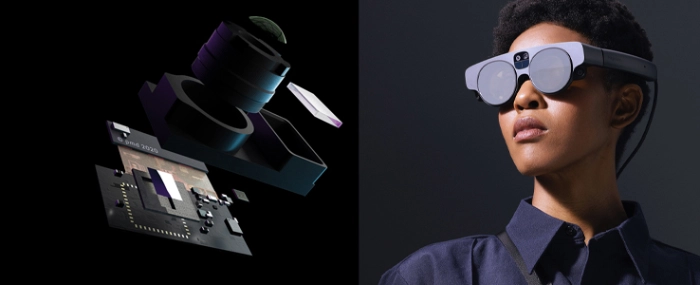
Infineon and pmd develop 3D depth-sensing for Magic Leap 2
Later this year, AR company Magic Leap is expected to introduce its newest AR device, the Magic Leap 2. One of the key features of Magic Leap 2 is the 3D indirect-Time-of-Flight (iToF) depth sensing technology that was co-developed by Infineon Technologies.
The new and improved IRS2877C Time-of-Flight imager captures the physical environment around the user and helps the device to understand and interact with it.
The Time-of-Flight technology developed by Infineon and pmd creates a 3D mapping of the environment as well as 3D image of faces, hand details, or objects in real-time. This helps to enable accurate environmental interaction with the device. In addition, the sensor also enables enhanced gesture controls on the Magic Leap 2.
“Sensing the environment precisely and in real-time is key for augmented reality applications,” says Magic Leap CTO, Julie Green, in a press release.
Infineon and pmd optimised the 3D sensor to bring the power consumption down to a minimum, reducing heat and increasing battery life of Magic Leap 2.
“We have introduced our 3D imager technology in a professional environment, where precision and reliability are life-saving features,” adds Andreas Urschitz, Division President Power & Sensor Systems and designated CMO at Infineon. “The latest 3D time-of-flight technology is going to enable new augmented and mixed reality applications for healthcare and industry. It’s about to change the way we live and work fundamentally.”
More and more AR will be applied in industrial and medical environments that make use of these technological advancements. For example Brainlab, a Munich based digital medical technology company, combines their patient-specific, AI-driven anatomical segmentation visualization software with spatial computing from Magic Leap, to provide surgeons an increased understanding of the patient’s anatomy.
